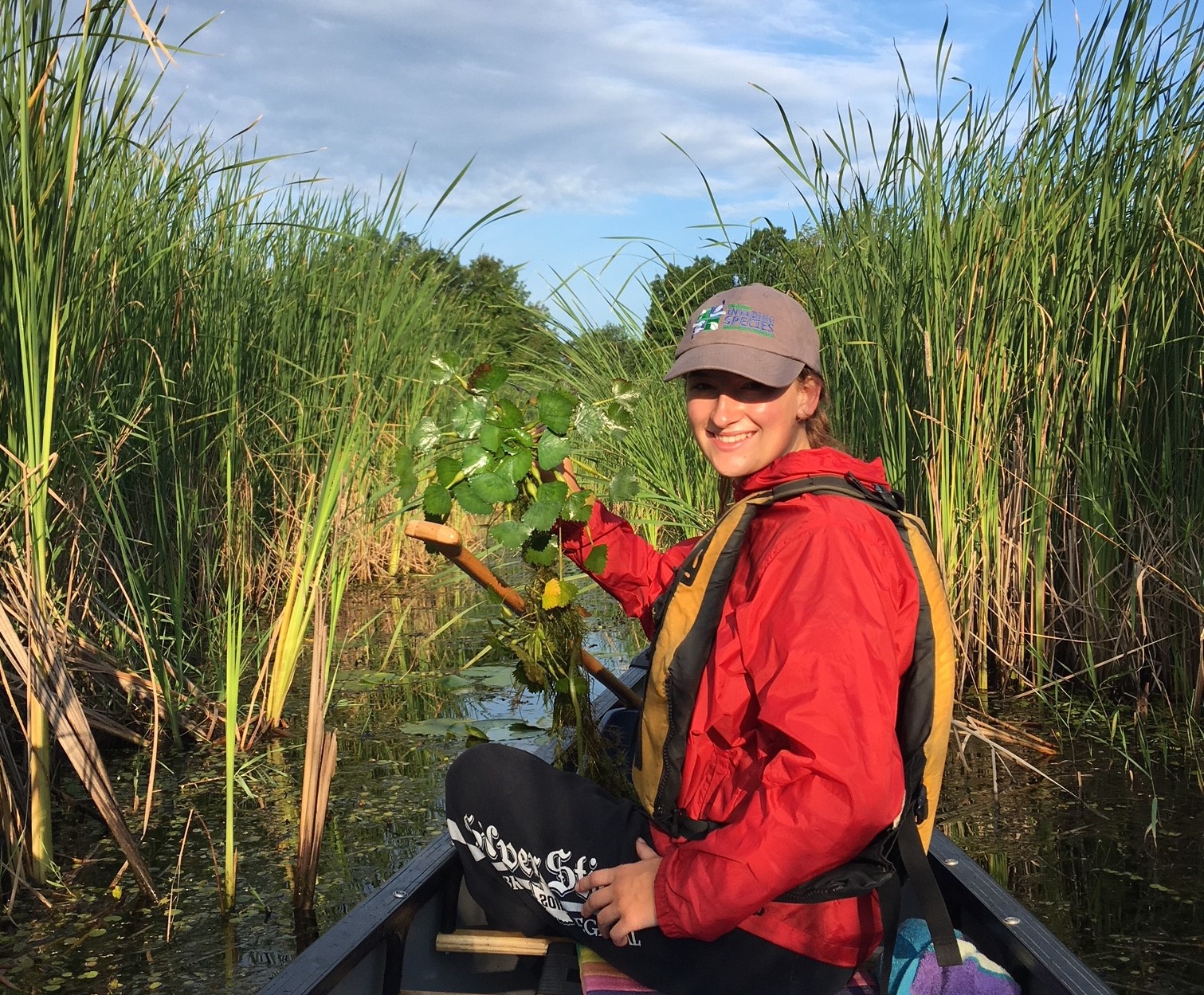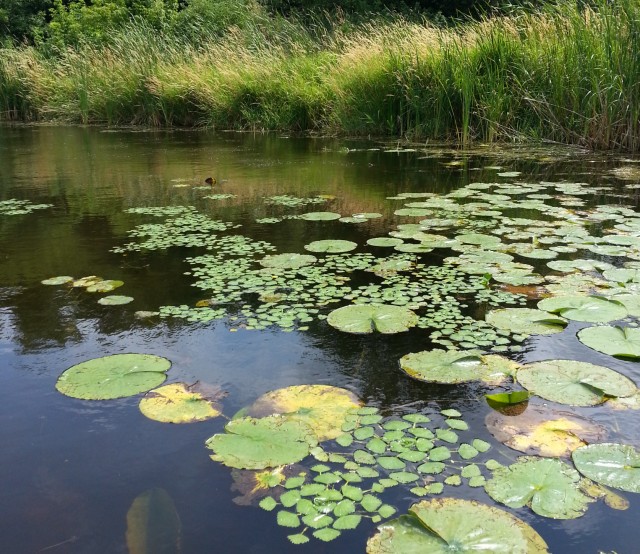Hit Squad makes its mark near Wolfe Island
Program results in dramatic decline in invasive species.

Lilly Auty spent most of last summer on the water. The second-year college student wasn’t skiing or sunbathing, though. Instead, Auty spent her summer leaning over the edge of a canoe on the hunt for an invasive plant that is threatening the shorelines of Wolfe Island near Kingston, Ont.
A member of the Ontario Federation of Anglers and Hunters’ (OFAH) Invading Species Hit Squad – likely the coolest summer job title ever – Auty works alongside DUC conservation specialists to deliver the European Water Chestnut Eradication Program. Their work is having a major impact in the battle to eradicate European water chestnut (Trapa natans) from eastern shorelines in Lake Ontario. Through this program, Wolfe Island’s Bayfield and Button Bays have seen an 81.7% reduction in water chestnut compared to 2014 and shows great promise in the efforts to keep this threat at bay.
European water chestnut is an invasive species and outcompetes native plants, forming impenetrable floating mats and clogging shorelines and waterways. As it grows, this invader can block light from penetrating beneath the water surface, reducing natural underwater plant growth and leading to fish kills. The plant’s woody, barbed seeds can even cause injury if stepped on.

©DUC
The good news is that European water chestnut is an annual species. “Every year, existing plants die in the fall and new plants regrow only from seed,” says Kyle Borrowman, who co-ordinates the European water chestnut program for DUC in Ontario. “So if we are able to remove the entire plant before it goes to seed, we can reduce the seed bank and keep ahead of the problem.”
Enter Lilly Auty and the Hit Squad.
Through funding support and partnership with the Ministry of Natural Resources and Forestry (MNRF), the Invasive Species Centre, (ISC), Ontario Wildlife Foundation, private landowners and hunt clubs as well as the Ontario Federation of Anglers & Hunters’ (OFAH) Hit Squad, DUC is combatting threats posed by this destructive wetland invader. Auty’s challenge: the European water chestnut populations around Wolfe Island.
“We started going out in the boat in early June,” says Auty, “and once the plants started coming up, it was fascinating to see just how dense the patches got and how quickly they would outcompete the other species around it.”
“We had an aluminum fishing boat for the open water and a canoe for maneuvering in the back creeks,” Auty explains. “When we found a patch, we would use a GPS tracker to pinpoint the location—almost down to the individual plant. Then we would pull the plants by hand and haul them into the boat for disposal.”

©DUC
As well as pulling plants, Auty co-ordinated education and public outreach for the program, increasing awareness of the problem through local events, open houses and social media. “Working with local residents is critical to our success,” acknowledges Auty. “One woman who canoed daily in the Brown’s Bay area found a patch of European water chestnut and brought it to our attention at an open house. Because of her early identification, this population was removed.”
Now entering its fifth field season DUC continues to respond quickly to remove any new infestations before they become a widespread problem.
“There’s always a concern that the plants will move in from another area” cautions Borrowman. We’ve seen what this plant can do when it’s left to its own devices, so that’s why ongoing surveillance is key.”
“We need to continue watching coastal wetlands, inlets and tributaries upstream and downstream along the Canadian shoreline of Lake Ontario and the St. Lawrence River,” says Borrowman. “And we’ll take all the help we can get to do it.”
You can help keep Ontario’s shores free of this invasive plant pest. Report sightings of European water chestnut at 1-800-563-7711 or visit www.invadingspecies.com.



